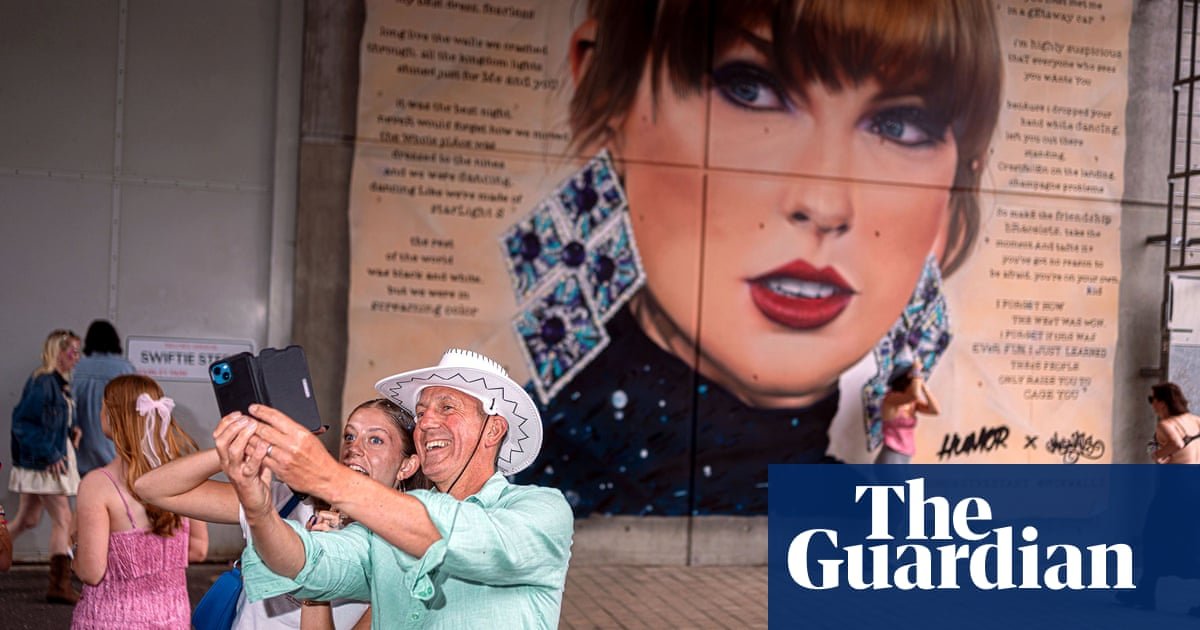1. Dozens of dates in more than 10 countries
When the European tour kicked off in Paris on May 9, more than 50 dates were scheduled, in France, Sweden, Ireland, Portugal, Germany, Poland, Austria, Spain, Italy, the Netherlands and Switzerland, before ending in London on August 20.
Several European cities reported a surge in demand for hotel accommodation and short-term lets over the summer after the dates were announced. BBC Scotland revealed that the housing shortage was so severe that several homeless people were sent away by taxi in Aberdeen and Glasgow.
Some areas have also strengthened transport links around the show, for example Irish Rail which is running additional night services to Cork and Limerick.
2. Seismic proportions
But it’s not all Taygating and friendship bracelets: Swiftonomics is serious business. The UK leg was predicted to boost the UK economy by £1 billion, as nearly 1.2 million fans attended concerts in Edinburgh, Liverpool, Cardiff and London.
According to Barclays, each of them would have spent an average of £848 on the whole experience, which would have caused a rise in inflation in the short term. However, some economists have expressed scepticism about the impact Swift’s tour could actually have on the economy, saying the £1 billion figure was overestimated.
Swift’s decision to donate to food banks in the cities she toured helped one food bank in Cardiff buy a truckload of supplies, while another in Liverpool said it would fund 12 months of donations.
A team of geophysicists recorded seismic waves generated by fans dancing in Wembley Stadium over three nights, from June 21 to 23, and found that the songs Love Story and Shake It Off generated tremors equivalent to a magnitude 0.8 earthquake.
3. A tragic context
On July 29, shortly before Taylor Swift arrived in the UK, three young girls were killed in a horrific attack at a Taylor Swift-themed dance class.
Swift is said to have personally contacted the families of the three victims of the Southport stabbing: Bebe King, six, Alice da Silva Aguiar, nine, and Elsie Dot Stancombe, seven.
After the attack, which left 10 people injured, Swift released a statement saying she was “completely shocked” and “completely lost as to how to convey my condolences to these families.”
Swift then took two young survivors backstage for a rare encounter during one of her Wembley shows. Photos posted to TikTok show Autumn and Hope Foster, who both attended the dance class, posing with Swift.
4. The highest grossing tour of all time
As Swift’s Eras tour travels the world, it is on track to gross more than $1 billion (£770 million) in 2024 alone, having already become the first tour to surpass that figure last year and making her the first ever billionaire through music alone.
Pollstar, a publication that tracks data on the live music industry, estimates that the tour’s gross revenue is just over $1 billion after the first 60 shows. That means Swift is selling an average of 72,000 tickets at $239 each, earning $17 million for each show.
By industry standards, artists receive about 85% of ticket revenue, suggesting Swift earns about $14.7 million per show. Her gross has been estimated at over $2 billion, although that figure does not include the cost of touring.
Tour merchandise sells for an average of $51 per item in the US, or £52 in the UK.
5. Terrorist plot foiled
The Vienna leg of Swift’s Eras tour has been cancelled after three people were arrested in connection with an apparent plot to attack a public event in the Austrian capital that was supposed to be Swift’s show.
According to police, one of the suspects confessed to planning to “kill as many people as possible outside the concert hall.” Between 20,000 and 35,000 people, without tickets, were expected outside the Ernst Happel Stadium for each of the three concerts.
Security has been tightened for the next match in the UK. Although fans tend to gather outside stadiums to sing along, Wembley has warned that such gatherings will be postponed.
#Taylor #Swift #Key #points #Eras #European #tour
